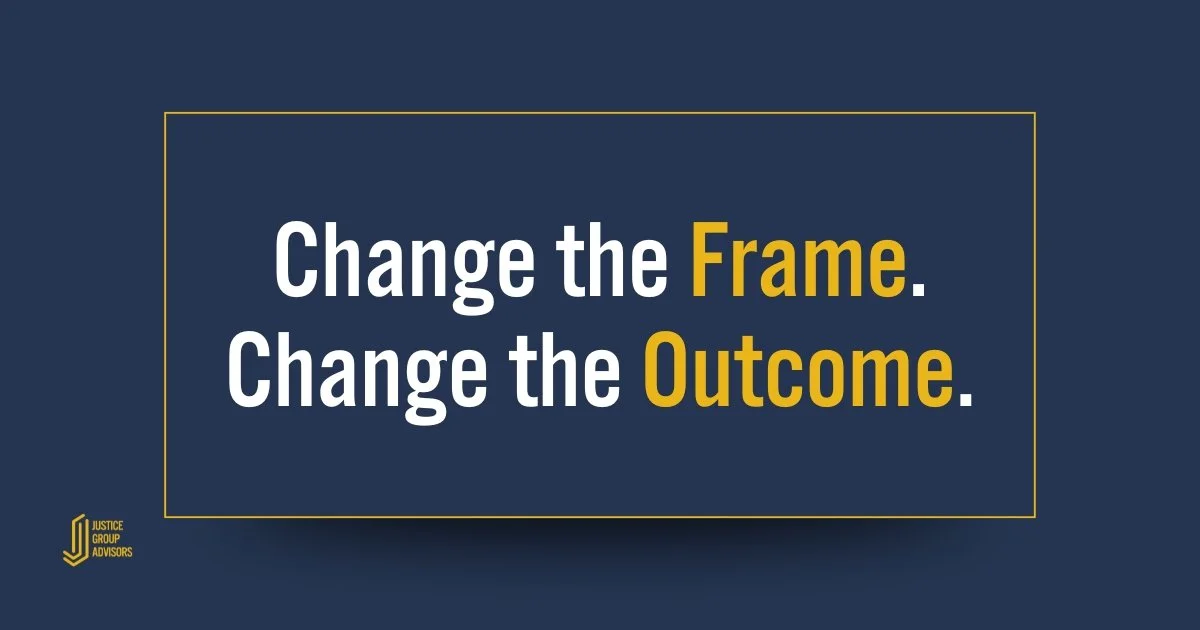Updated november 2025What Is Enterprise Leadership — And Why It Matters at the Executive Level
Enterprise leadership is the shift from leading your function to leading the business. It's the moment your role expands from driving results inside your lane to creating alignment across the organization. This is what changes when leaders move from functional expertise to enterprise impact.
↓ KEEP READING: WHAT CHANGES AT THE EXECUTIVE LEVEL.
THE BIG PICTURE: WHAT IS ENTERPRISE LEADERSHIP?
Before you dive into the details, start here.
This article breaks down the invisible shift that happens when leaders move from functional expertise to enterprise impact—and what it really takes to lead at the executive level.
TL;DR — From Functional Expertise to Enterprise Impact
The toughest leadership transition isn’t about getting promoted — it’s about learning to lead the business, not just your function.
Leaders who thrive at the executive level:
- Reframe how they see success — from individual mastery to enterprise impact.
- Let go of over-efforting and learn to align, not control.
- Trade certainty for clarity — and confidence for calibration.
- Build influence through others instead of around them.
If you’ve ever felt like what used to work suddenly isn’t, this is the shift that explains why — and how to navigate it.
Jump to a section:
THE SHIFT FROM LEADING A FUNCTION TO LEADING THE BUSINESS
Leading the Business — Not Just Your Function
You can’t lead the business the same way you led your function.
At the enterprise level, the challenge changes.
The scope is broader. The stakes are higher.
And the signals that once told you you were succeeding—responsiveness, expertise, control—stop translating.
Because leading across the business isn’t about what you know.
It’s about how you think.
Enterprise leadership is the moment your role shifts from driving results to shaping direction—from owning outcomes inside your lane to aligning outcomes across the organization.
That’s what makes this stage so demanding—and so often misunderstood.
The leaders who thrive here learn to:
See the system, not just the silo.
Create clarity before consensus.
Scale influence through others, not around them.
This is the work of senior leadership: translating complexity into traction.
It’s also where coaching delivers the highest ROI—not to “fix” performance, but to expand perspective.
The sections that follow unpack what actually changes when leaders start leading the business, not just their function—how identity evolves, how decisions get made, and how real enterprise traction begins.
“You can’t lead at a higher level until you start thinking at one.”
WHAT CHANGES WHEN YOU MOVE FROM FUNCTIONAL LEADER TO ENTERPRISE LEADER?
The Real Promotion No One Prepares You For
You got promoted because you were excellent at your job.
But now, excellence looks different — and no one tells you that.
You stop winning by being the best at what you do — and start leading by shaping how everyone else succeeds.
That’s the real promotion: from leading within a function to leading across the business.
At the enterprise level, success isn’t about effort. It’s about leverage.
It’s learning to see the business as a system — and lead through it.
See also: When “working harder” stops working, these five shifts show you how to lead differently—and why it matters at the enterprise level.
“Every promotion changes your title. The real shift changes your perspective.”
THE LEADERSHIP GAP THAT NO ONE TALKS ABOUT
The Hardest Part of Leadership Growth Isn’t Skill — It’s Identity.
You got the title. You earned the trust.
But sometimes, confidence takes longer to catch up.
Even senior leaders can feel like they’re still “stepping into” roles they’ve technically already earned.
That’s not insecurity — it’s inertia.
Your title can change overnight.
Your self-perception takes longer to adjust.
That lag can slow decisions, soften conviction, and subtly shape how others see you in return.
Enterprise leadership begins when you close that gap—when you lead from the full weight of the role you already hold.
(See also: “Your Team Already Sees You as a Leader — Do You?”)
“At the top, leadership isn’t about answers — it’s about how you frame the questions.”
THE SCIENCE BEHIND ENTERPRISE THINKING
The Mindset Shift That Redefines Leadership at the Top
Enterprise leadership isn’t just a bigger version of functional leadership.
It’s a different mode of thinking altogether — one that rewires how leaders process risk, make trade-offs, and build alignment across competing priorities.
Behavioral science explains why the transition is so disorienting:
Status quo bias keeps leaders doing what used to work.
Loss aversion makes it hard to let go of control.
Cognitive load limits the ability to see across the system instead of inside it.
The leaders who succeed at this level learn to prioritize better, decide easier, and scale influence through others — not around them.
“At a certain level, the habits that built your credibility start to cost you influence.”
WHAT TO DO WHEN THE NEXT LEVEL OF IMPACT REQUIRES A NEW WAY OF LEADING
Growing Leaders Who’ve Outgrown Their Playbook
Even your strongest leaders hit a point where what made them successful starts to limit them.
The instincts that once drove progress—speed, control, certainty—begin to create friction instead.
That’s not failure. It’s a signal that they’re ready to lead differently.
And it’s one of the hardest moments to navigate as a senior leader or HR partner: how to help someone grow without breaking what makes them great.
“Enterprise leadership isn’t about scale — it’s about signal. The way you think becomes the way others move.”
Proof in Action: What Enterprise Leadership Looks Like in Motion
Here’s what enterprise leadership looks like when it moves from principle to practice.












